| 1 | South America’s ruling snake |
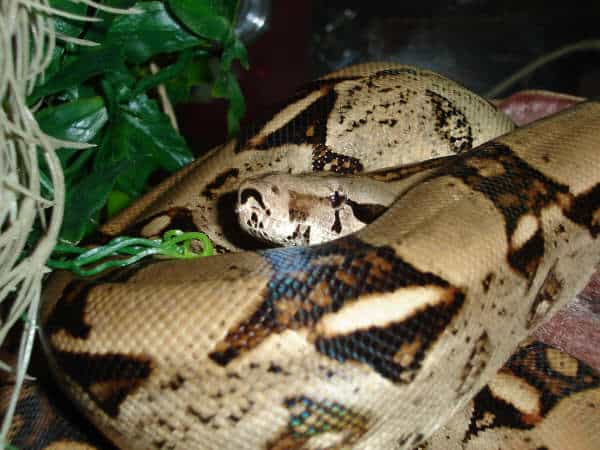
The boa constrictor is an icon of terror, joining such infamous snakes as the king cobra and the black mamba. Everyone knows that this snake is one of the biggest in the world, and is able to exert a brutally efficient squeezing force on its victims. However, something most people don’t realise is just how widespread this species is in its native lands.
Boa constrictors can be found slithering over approximately 2 thirds of the South American continent, including Brazil, Columbia, Venezuela, Paraguay, Bolivia, and more. Their southern reaches extend deep into Argentina, while their northern flanks just cross the border into Panama.
The species also defies the ocean, and has natural populations on several islands, such as Lesser Antilles, Trinidad and Tobago, Dominica and St Lucia. The only South American country they don’t inhabit is Chile, because of the impenetrable high Andes mountain range along its eastern border.
The boa constrictor can thrive in almost any habitat. They particularly favour rainforests and grassy clearings within them, but woodlands, grasslands, dry tropical forest, thorn scrub, and semi-desert are also popular hangouts. Being so common, their population numbers are a complete mystery. Scientists have no idea how many boa constrictors exist in the world, let alone whether they’re rising or falling. If we had to make a guess, it’s almost certainly well into the millions.
| 2 | The strongest PSI squeeze force |
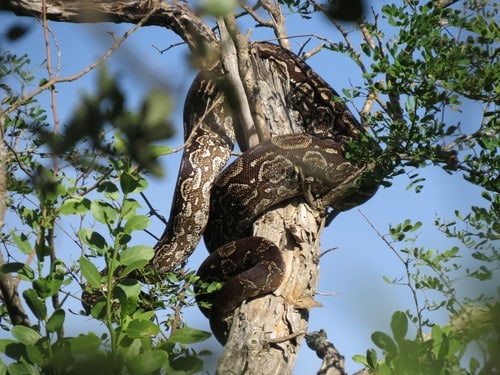
Everyone knows that boa constrictors dispatch their prey via the cuddle of a lifetime, and science has now proven that the hype is justified. The boa constrictor has the highest pounds per square inch squeeze force of any surviving snake, reaching 25PSI in a 2007 study. This increased 2.6 fold when the diameter of the snake was doubled. By comparison, the average Burmese python, reticulated python, and ball python score 6.23, 7.2, and 4.0 respectively.
However, it’s the California kingsnake which has the highest squeeze force relative to its size. The species only measures 1.2 metres compared to the boa constrictor’s average of 2.0, yet the kingsnake has been witnessed taking on snakes much larger than itself, including 1.5 metre ratsnakes.
One common misconception is that boa constrictors attack human beings at the drop of a hat, but in reality, they’re rarely aggressive. Boa constrictors commonly grip handlers’ arms in snake enclosures, causing a spike of fear in the victim, but this is actually to prevent themselves from plummeting to the hard floor.
| 3 | Hooks prey with its fangs |
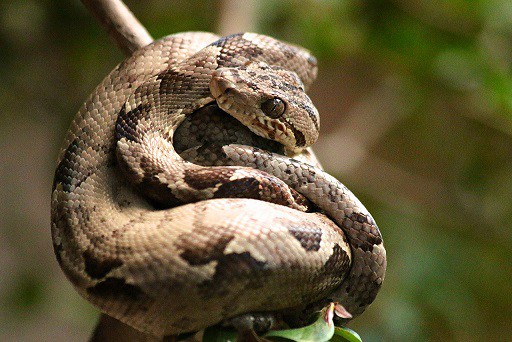
On the outskirts of the Amazon rainforest, the boa constrictor’s diet includes rodents, mice, bats and even monkeys. The boa constrictor begins the hunt by slithering up a tree and waiting in place patiently. It will occasionally dangle its head down while flecking its tongue to analyse its surroundings, before retreating upwards to the shadows. Only rarely will a boa constrictor actively stalk its prey; its time-tested strategy is the ambush.
When a rodent or lizard finally saunters past, the boa constrictor will propel itself from its secure branch perch with immense speed, and bite the prey deeply and accurately. With its hooked teeth holding the prey in place, the boa constrictor instantly uses its remaining momentum to coil itself around the poor creature’s neck. Finally, the boa constrictor will squeeze with all its body weight. 25psi is nothing compared to a saltwater crocodile’s 3700psi, but the boa constrictor uses its entire 2.5 metre body.
One misconception is that boa constrictors suffocate their prey to death. They actually use asphyxiation, cutting off the blood flow to the creature’s brain and rendering it unconscious within seconds.
| 4 | Can’t stand alcohol |

Should you ever wake up to find a boa constrictor coiled around your neck, there’s a simple strategy: grab your unfinished can of beer. Boa constrictors hate the taste and scent of alcohol, and professional snake handlers commonly keep a bottle and cotton swabs close at hand. The alcohol should be placed in front of the boa’s nostrils, and the result will be an instant release in pressure. If you’re bathing in the candlelight, then simply chuck your red wine glass in its face. Boa constrictors also find hot water and cold water intolerable – any difference to their warm and humid norm in the jungle.
Th last great boa-defeating secret is white vinegar, which for some reason they can’t stand. If you’re forced to take the “manual” option of unwinding the snake by force, then always start with the tail, as this is where the boa constrictor’s muscles are weakest.
Here’s another warning: never cut off a boa constrictor’s head, as its body won’t realise that the game is up for several more hours.
| 5 | Senses its prey’s heartbeat |
Boa constrictors aren’t particularly intelligent, as they’re commonly observed constricting lifeless carcasses when there’s no need. However, their timing is second to none. They know exactly when to release the pressure due to monitoring their prey’s heartbeat, as revealed in a 2012 study. When the heart stops pumping, a boa will instantly uncoil – they’re highly energy efficient predators.
In fact, boa constrictors are far from a one trick pony. One of their bonus abilities is regenerating their teeth, with new rows constantly sprouting up to guarantee a fully functional bite at all times. Rather than sharp fangs, these are rounded, hooked teeth designed for gripping prey.
Boa constrictors slither forward in a completely straight line, rejecting the curved slithering of other snakes. They aren’t particularly fast, rarely breaking the 1mph barrier. Even the common British grass snake can be surprisingly dart-like in a pond or stream. Boa constrictors are at their fastest when leaping from their tree branches. The boa constrictor is also skilled in the dark arts of intimidation, as its piercing hiss can be heard from 100 feet away.
| 6 | Mostly peaceful around people |
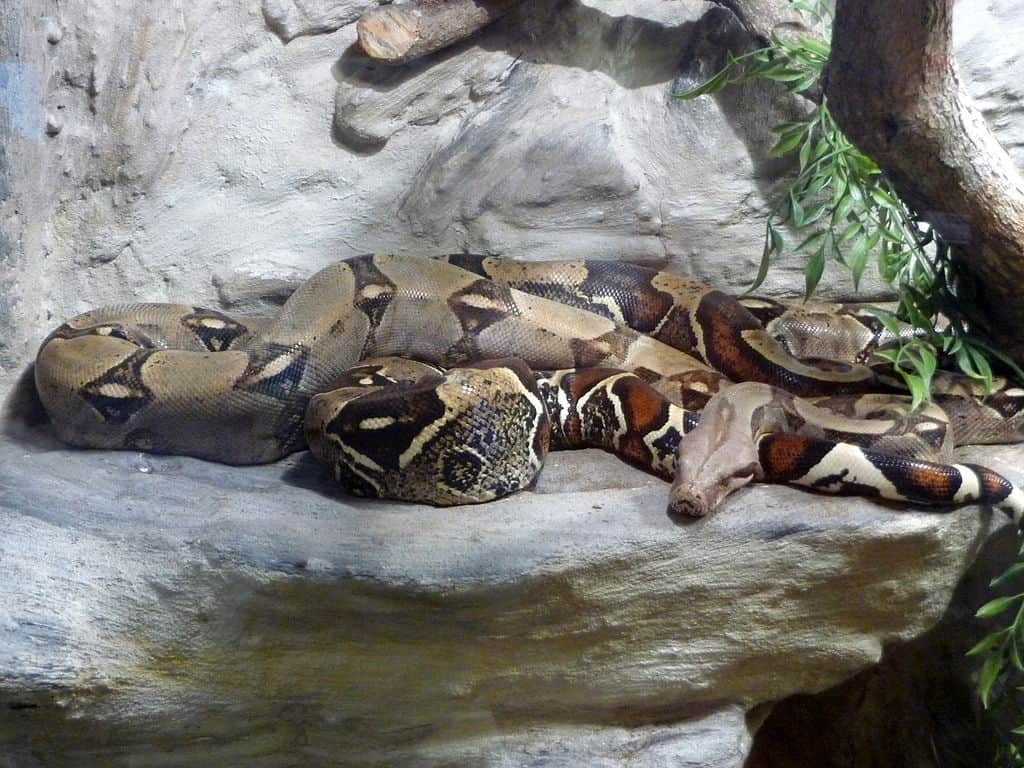
In the era of ancient civilisations, it would be incredible if a small child was never tragically lost to an encroaching boa constrictor. But what about the modern era? Even with the omnipotent internet, records of deaths are surprisingly hard to find. Only one notable case has happened in the last 50 years, and it took place in Nebraska in 2010. 34 year old Cory Byrne was the proud owner of a 9 foot long, 25 pound boa constrictor. One day, he decided to show it off to his roommate’s girlfriend. He overconfidently draped the snake around his neck, but this spooked the snake, causing it to tighten its muscles around Byrne’s veins.
Rumours circulated that he’d been dancing with the snake, but regardless of why, his blood supply was cut off just like an Amazon rodent’s, and he dropped to the floor. The roommate pried the snake from Byrne’s neck, but he died several hours later in hospital. TV reports showed the Nebraska Humane Society marching into the house and placing the boa in a comfortable glass cage. At this point, 13 Americans had been killed by pet pythons since 1980, but none by boa constrictors.
| 7 | One of Earth’s longest snakes |

The largest surviving snake is the reticulated python, with an average female length of 4.8 metres. The longest known extinct snake was the titanoboa from Columbia, which stretched to a colossal 14 metres. The boa constrictor falls well short, with an average female length of 2.5 metres, but it’s still one of the largest snake species in the world.
The boa constrictor zips past the Indian cobra at 1.3 metres, the sidewinder at 60cm, and just exceeds the feared black mamba at 2.4 metres. The longest boa constrictor on record was 5.5 metres, and their lifespan is equally healthy, averaging at 20 years in the wild.
Captive boa constrictors generally live 10-15 years longer than wild ones, and the oldest ever by reliable data reached 40 years, 3 months, and 14 days old. This was Popeye the boa, who resided in Philadelphia Zoo and died a peaceful death in 1977. He was purchased from a London dealer in 1936, and euthanised after suffering from age-related health problems.
| 8 | At least 8 subspecies |
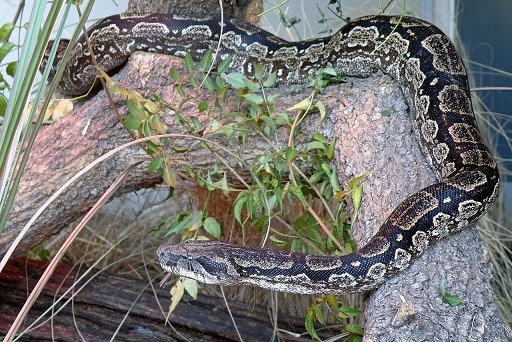
Not all animals have a massive variety of subspecies. The brown bear has 9 in Eurasia alone, but the polar bear is a single monolithic entity. Across South America, the boa constrictor is divided into 8 genetically distinct empires:
- Red-tailed boa.
- Pearl Island boa.
- Argentine boa.
- Amaral’s boa.
- Ecuadorian boa.
- Peruvian long-tailed boa.
- Orton’s boa.
- St Lucia boa.
The classic image people have is Boa constrictor constrictor, AKA the red-tailed boa constrictor, with its classic beige and black scales.
The Argentine boa constrictor (B. c. occidentalis) looks completely different, as its scales are far darker (see picture). This is the resident boa of Paraguay and northern Argentina, and is also one of the largest subspecies, with a female average of 3 metres. The long-tailed boa (B. c. longicauda) patrols the north Peruvian realm of Tumbes, and is easily identified by its silvery-grey scales. This subspecies is one of the smallest.
Originally, there were 9 subspecies, but Boa constrictor imperator (a savage serpent of Mexico and central America) was recently elevated to a full species after an unusually high genetic divergence was discovered.
| 9 | Panic on the streets of Scotland |
The top news story about boa constrictors recently hasn’t been about conservation, or Amazon loggers being attacked by one hiding in a tree. Instead, it took place in drizzly and damp Scotland. It started when local mum Kayla Strachan, 32, posted on facebook that one of their pet boas had escaped into the streets. She had accidentally left the window open, and the boa constrictor had seized its chance, breaking its way to freedom and slithering through the alleyways of Newarthill undetected. “I know I’m putting the fear of God in half of Newarthill with this post. I’m so sorry please share!” she posted.
A cloud of terror descended on the 2000-strong town. People were afraid to leave their houses, let alone walk dogs. They promised to report the boa constrictor if they saw it, but most silently prayed that it would be someone else. The Scottish SPCA didn’t help, when they mentioned how recent hot weather could make the snake much more active than usual.
“My sister-in-law told me to shut the bathroom door as they can come up the toilet“, said an 80 year old retired security guard. Yobs and hoodlums phoned up Strachan pretending that they’d found the snake, or pretending to be the snake. There were people carrying torches everywhere, inspecting darkened playparks and the undersides of cars. In the end, the beloved boa constrictor turned up in the family’s house, having never left the premises.
| 10 | Can’t cope with iguanas |
Despite their immense crushing skills, the boa constrictor isn’t infallible even with the tiniest animals. It seems to have a weakness against reptiles, as one time, scientists observed a boa constrictor attacking a spinytail iguana on an expedition in Honduras. For an hour, the boa constrictor crushed and crushed. The iguana was stuck in a vice-like grip and had no change of escaping.
The scientists brought both the living snake and supposedly dead iguana back to their lab. They placed them in an observation tank, leaving the snake its meal, the humane thing to do. But when they returned the next morning, they were shocked to find the iguana at the opposite corner of the observation tank, alive and well.
The explanation was the heartbeat. Being its main food group, a boa constrictor is likely more attuned to mammalian pulses compared to reptiles. “We have no idea what was going on,” said Dr Boback, “but [the iguana] seemed totally fine”. Both snake and iguana were released into the wild – let’s hope that’s the last they see of each other.
